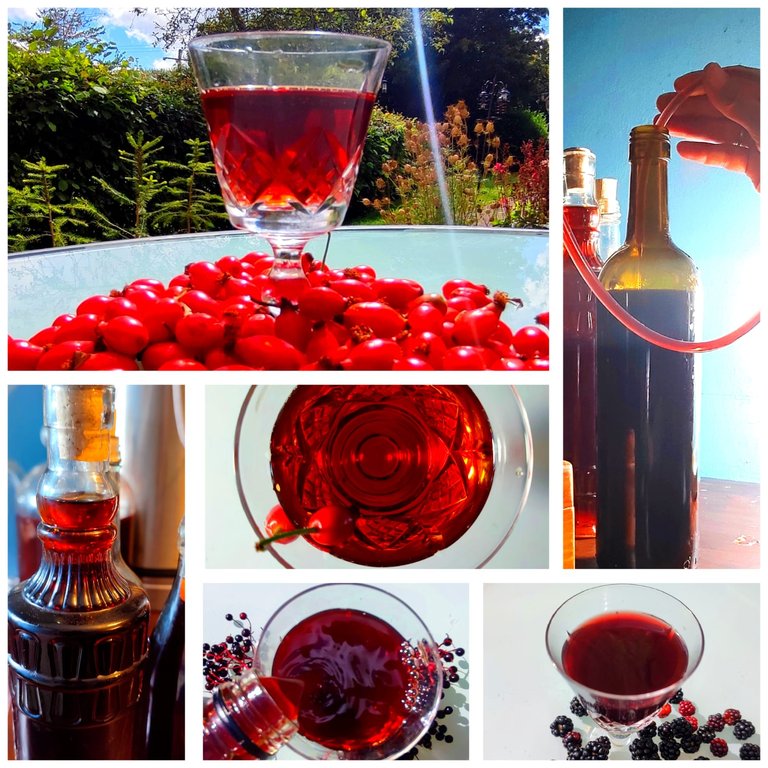
The berries are starting to ripen, and it’s time to clear out my fermenters so I can start making more wine! I don’t drink much myself, but I enjoy experimenting with different techniques and seeing how they turn out. It’s all part of the fun!
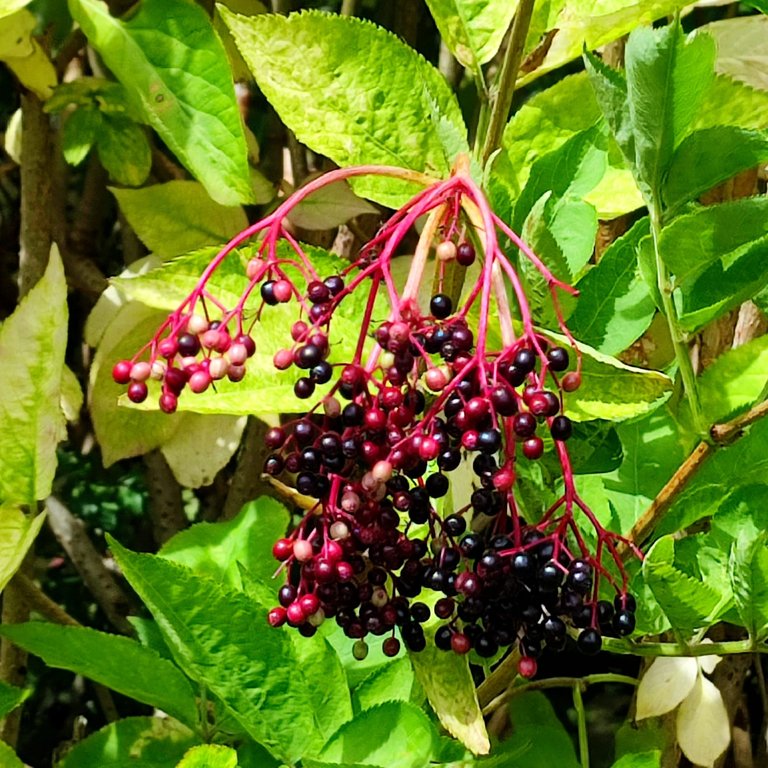
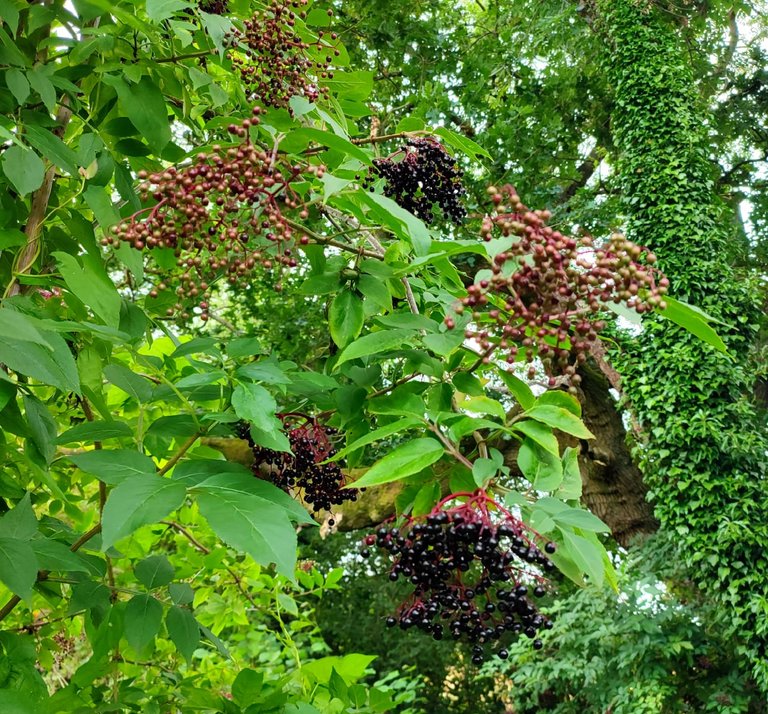
Elderberries
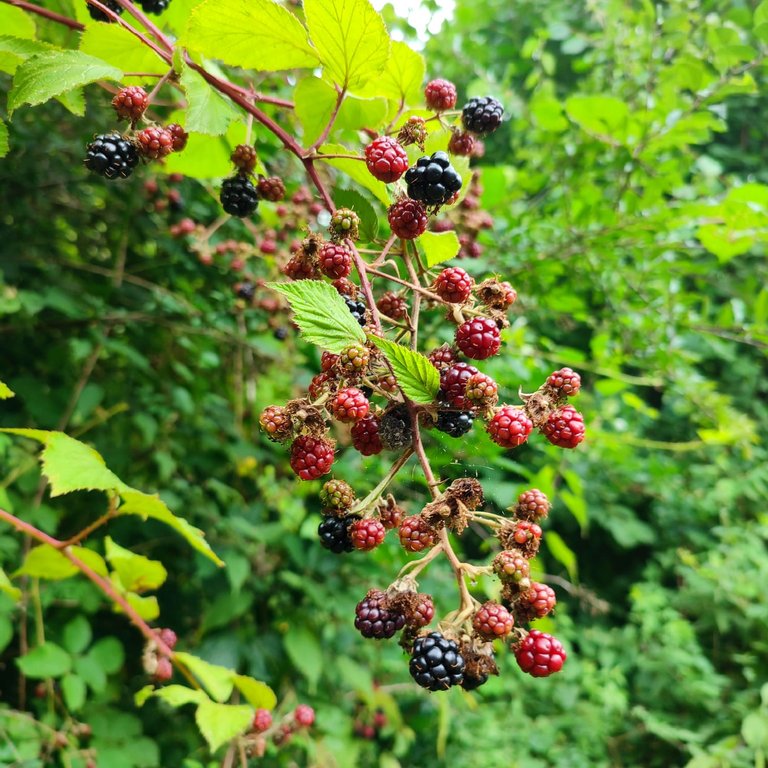
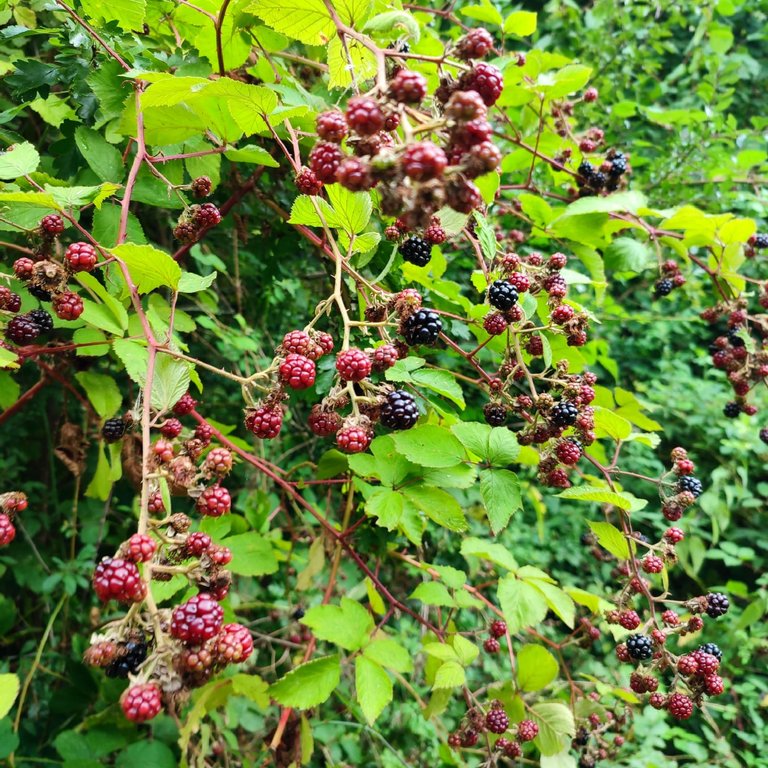
Blackberries
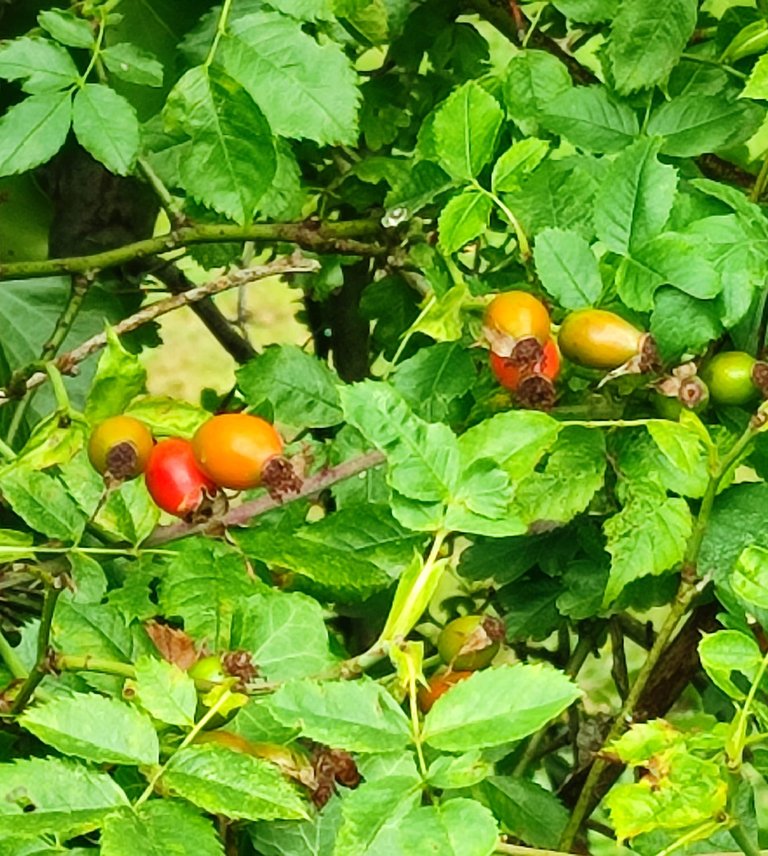
Rosehips
Last year, I made some wines using only what nature offers, and now it’s time to bottle them up! I really enjoy sticking to the traditional methods. With just the basics—ingredients and equipment—we can make wine the old-fashioned way, and it’s so rewarding!
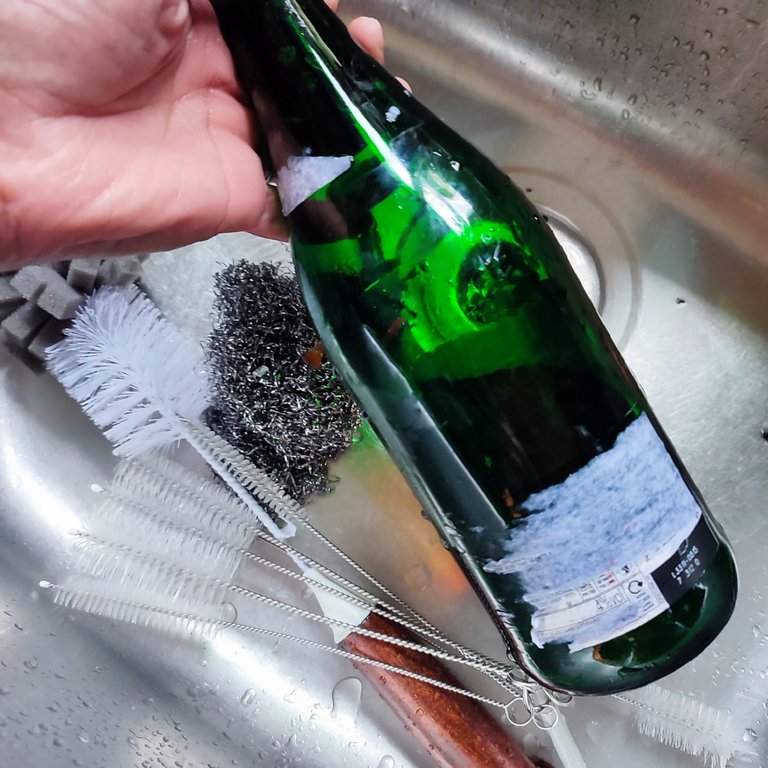
The rising cost of glass bottles urged me to collect them.
I clean them with assorted brushes.
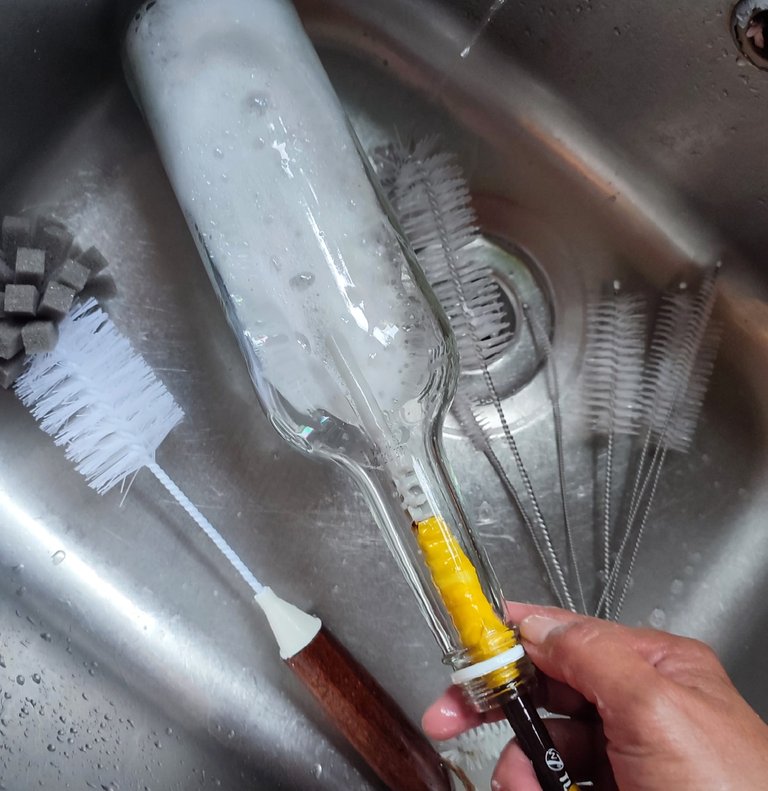
Peeling the labels and removing the glue that sticks on the bottle, I find that rubbing oil on the sticky glue removes it easily. The oil melts the glue.
It takes a lot of patience, but it is quite satisfying when one turns sparkly clean.
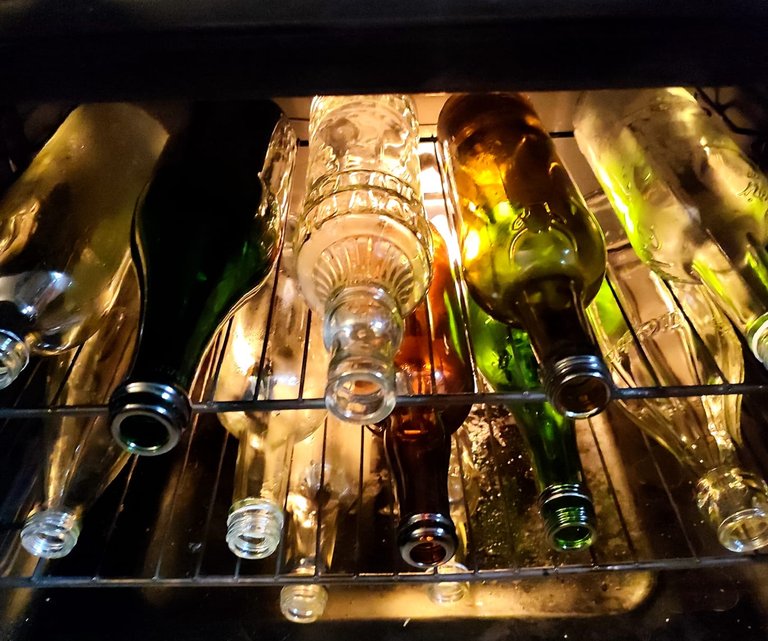
To sterilize, I place the bottles in the oven on gas mark 3 for 20 minutes. I make sure they are not touching each other, as the bottles expand when heated and can cause breakage.
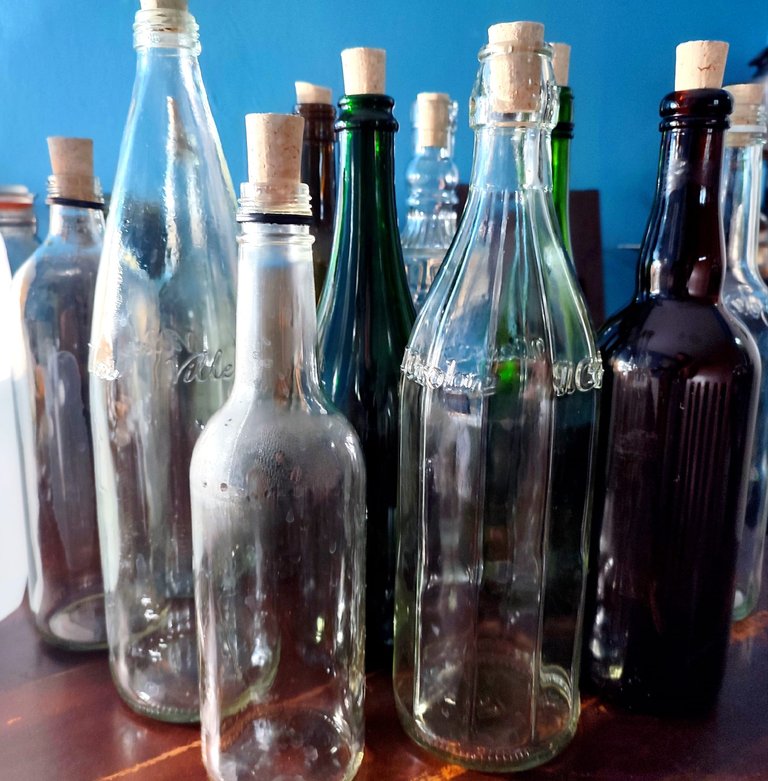
I let them cool before taking them out of the oven.
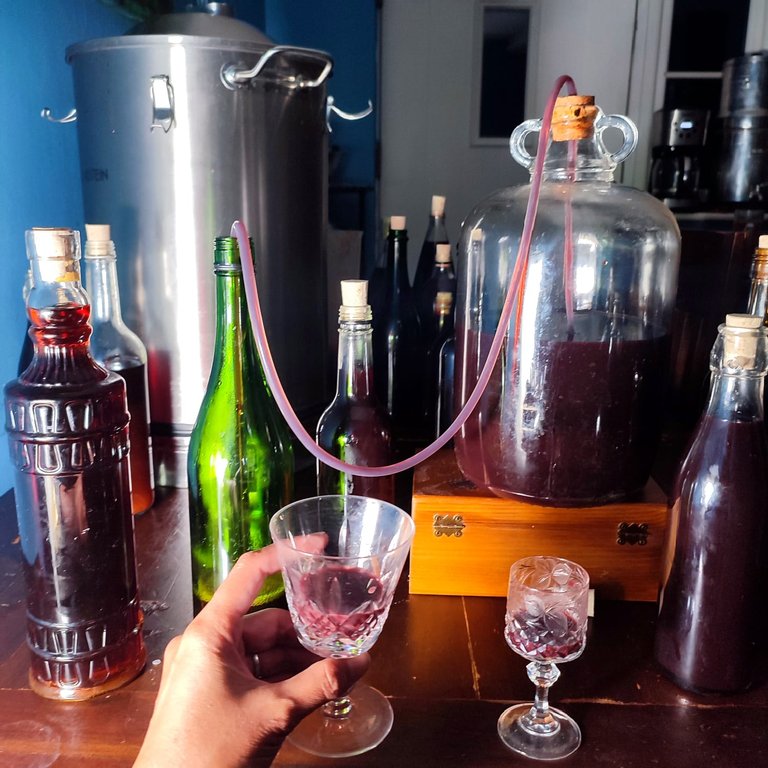
So, I bottled the blackberry, rosehip, and elderberry wines. They are the most abundant berries available here.
With this batch, I did not use any shop-bought ingredients like pectolase to clear the wine.
I also did not use commercial yeast; I used my elderflower yeast, which I collected last spring.
I also did not stop the fermentation using the Campden tablet, as Campden can cause headaches. I just let the fermentation continue. So, I estimate that this wine contains at least 18% alcohol.
As I did not use yeast nutrients, I kept the berries during the whole fermentation to supplement the yeast and help keep them alive so that they could convert as much sugar into alcohol as possible. This also gave the wine more body, taste, and color: more nutrients and antioxidants. The only thing is, you’ll have some straining to do.
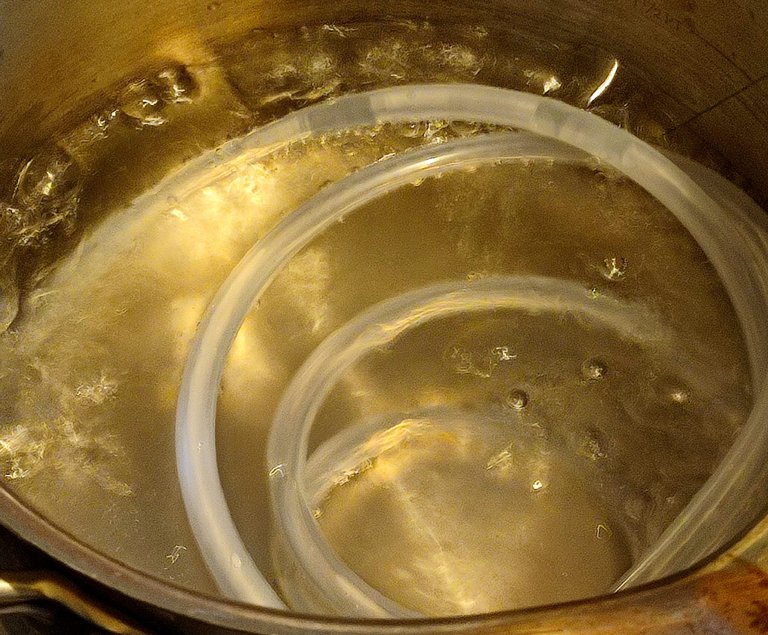
I used a sterilized silicone tubing (I boiled it for 20 minutes.)
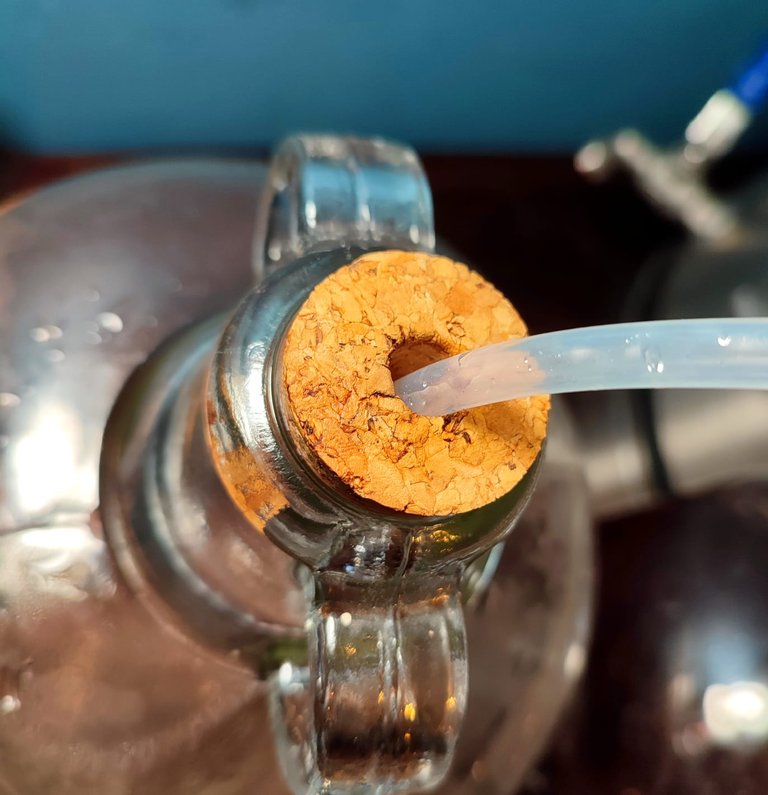
The tubing fitted nicely on the fermenter cap/vent, keeping alcohol not to evaporate so much.
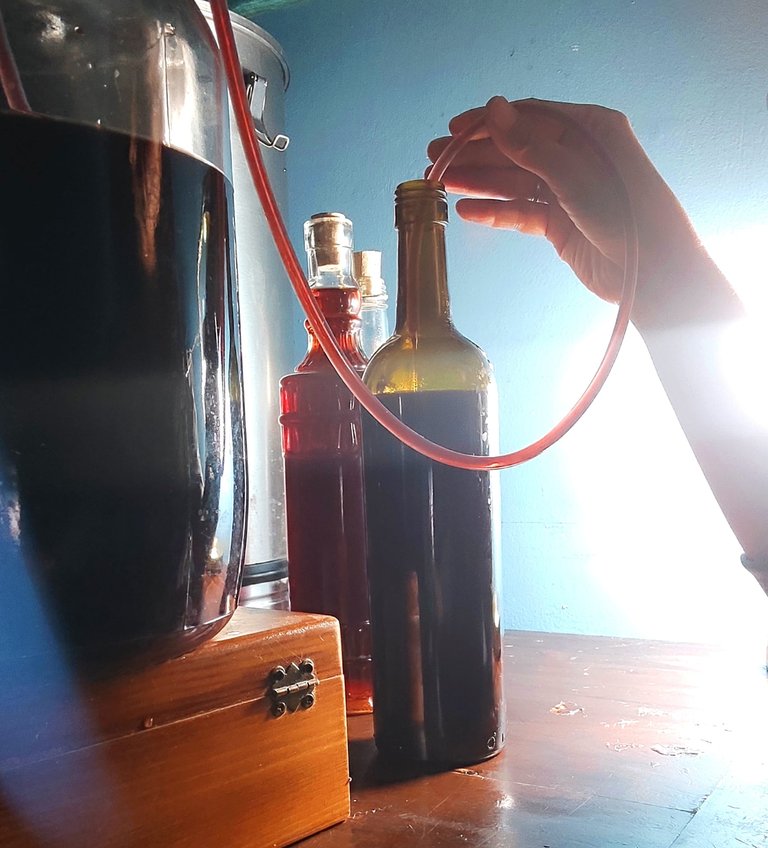
I tried to bottle them in a closed system as possible so the alcohol wouldn't evaporate.
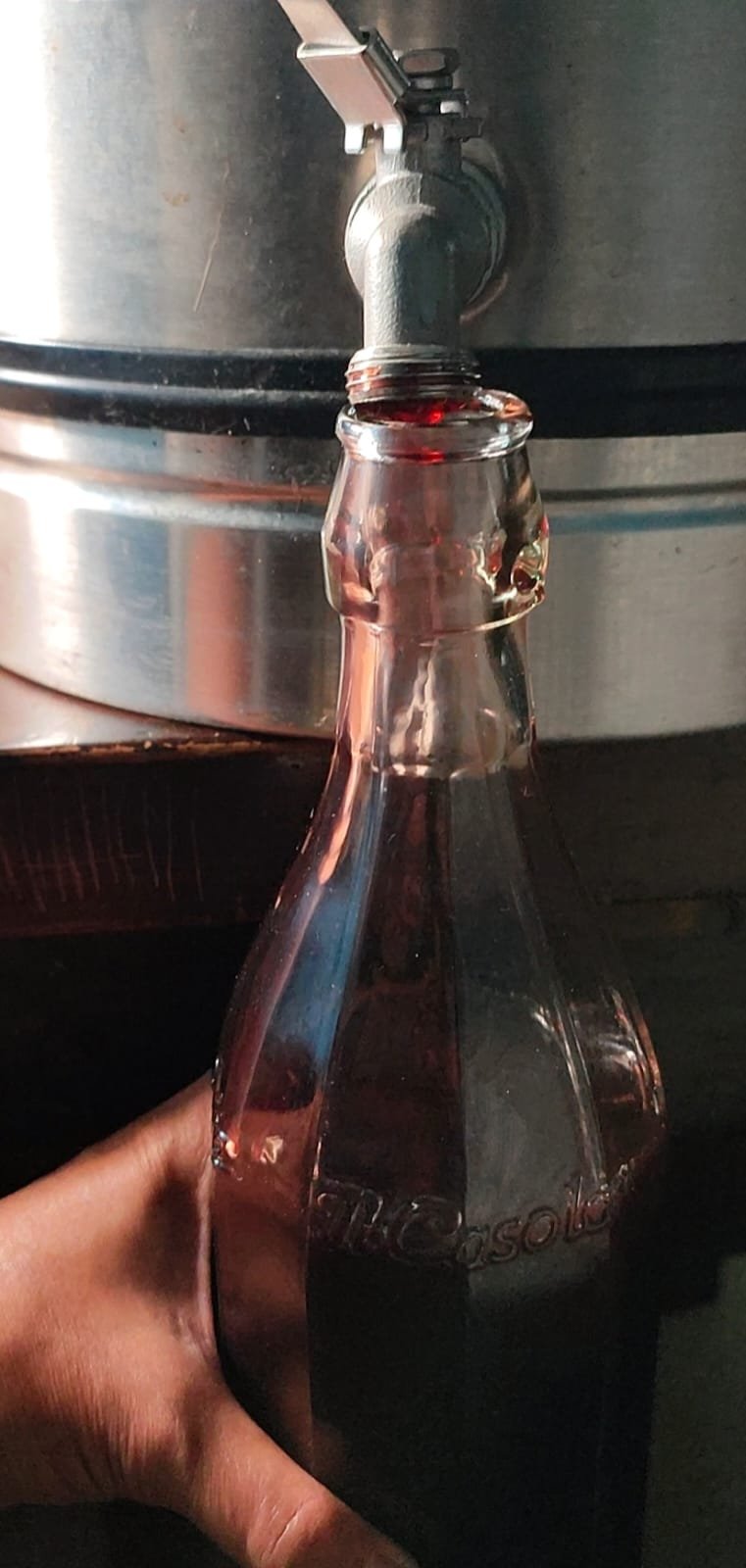
However, during the bottling process, the place smelled of alcohol fumes.
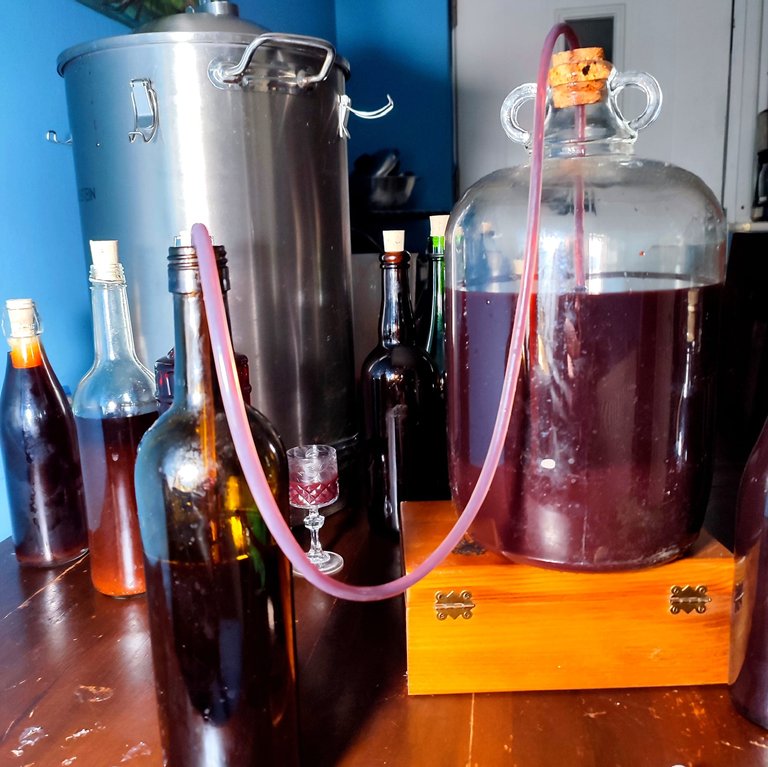
Like watching a blood transfusion (haha), my favorite part of the wine-making process is bottling, as I get to drink and compare the wines.
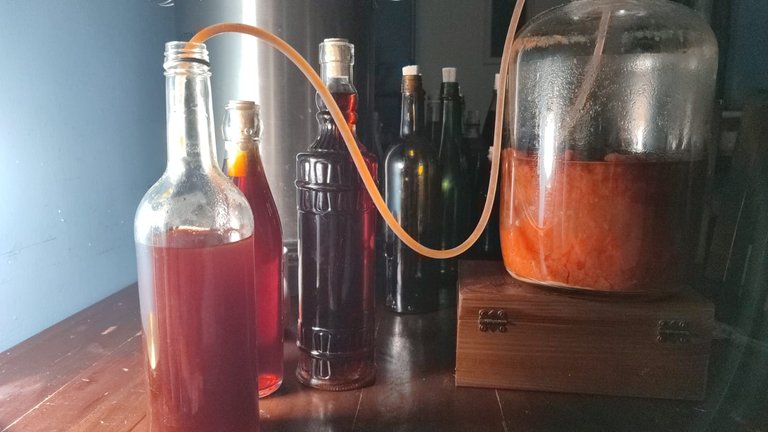
Out of 5 liters of Rosehips must, I only yielded 2.5 liters of wine. Rosehips have a lot of pectin, and as I did not use pectinase to clear them, I only yielded half. The rest was turned into a mash.
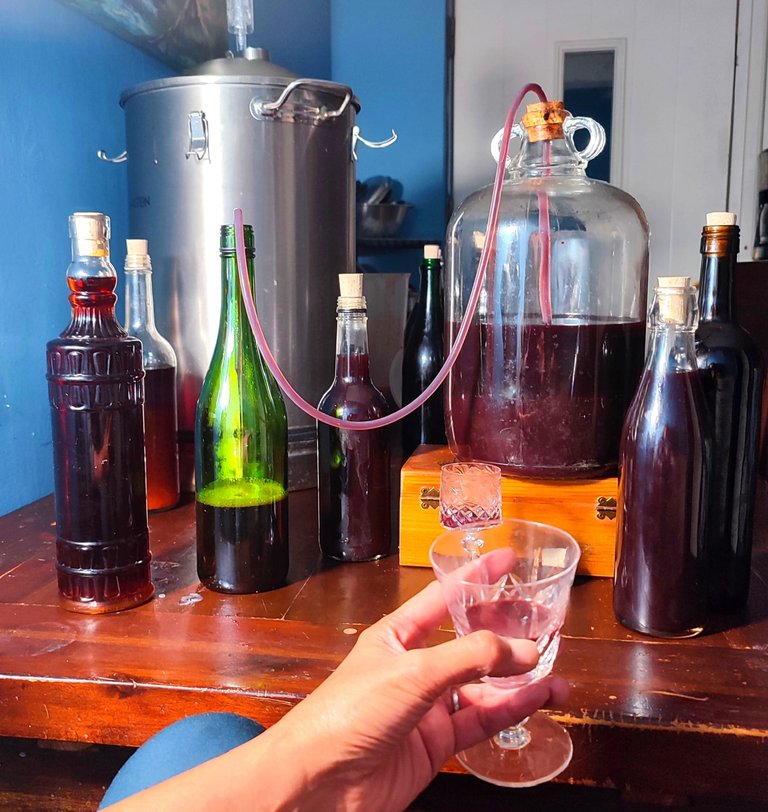
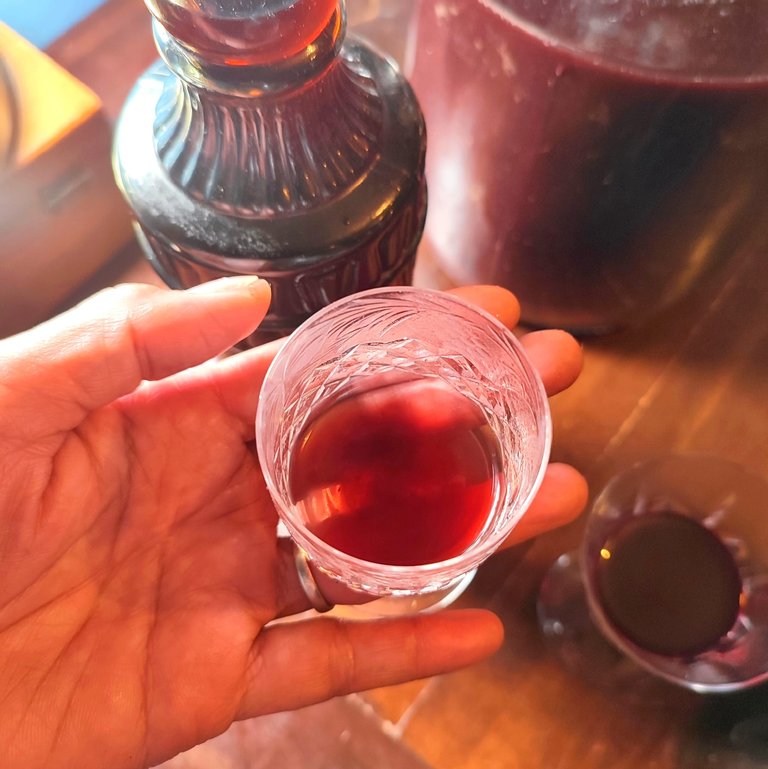
During the bottling, I had to keep tasting, and it made me tipsy!
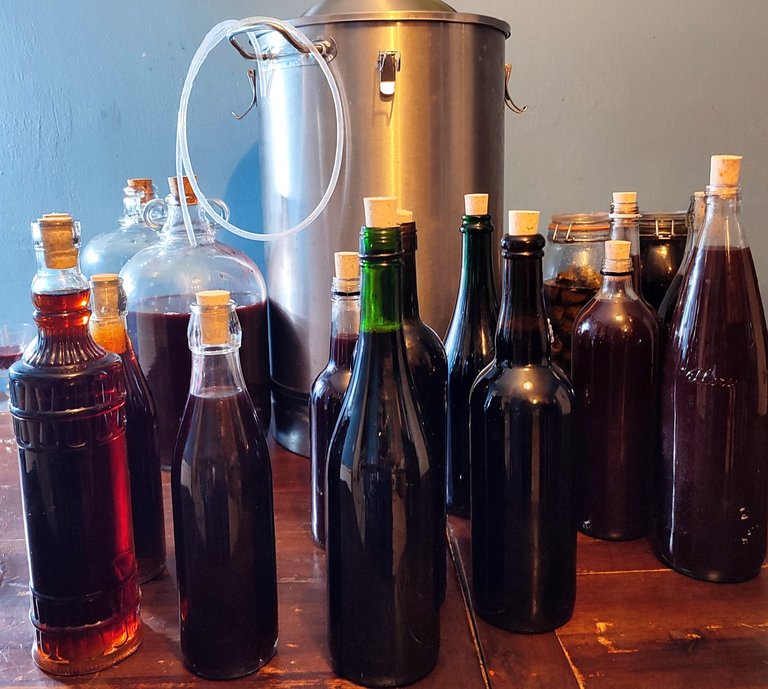
I bottled most of the wine but still need a few more bottles.
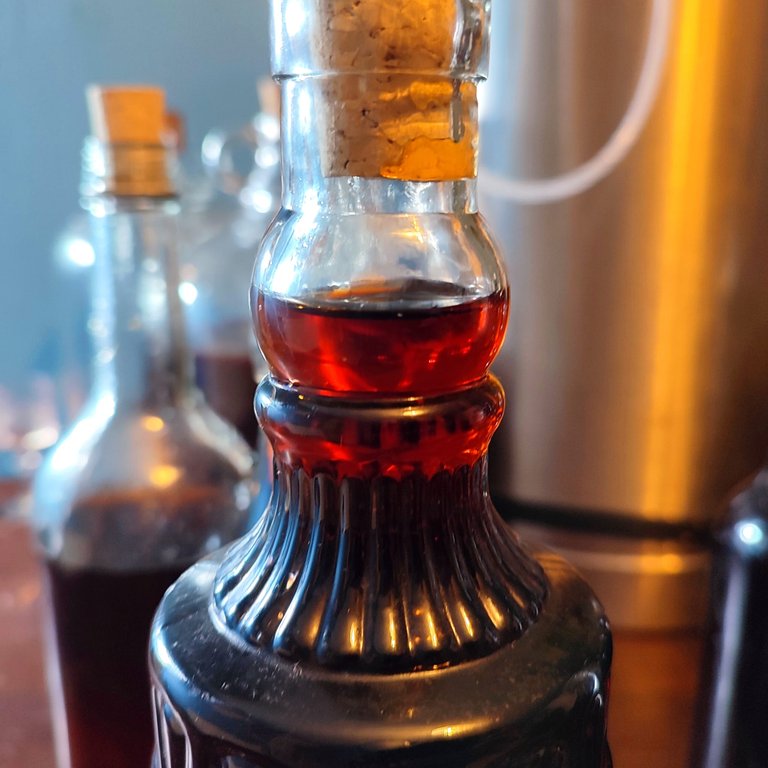
I was admiring these traditionally made wines. They consist only of Fruits, water, sugar, and the magic of natural yeast.
These wines speak for themselves.
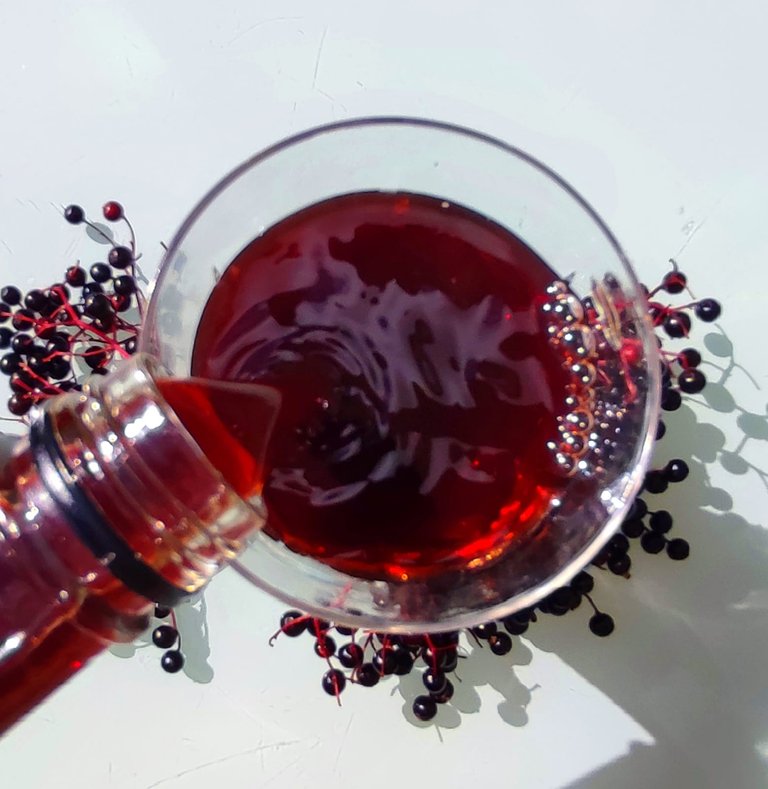
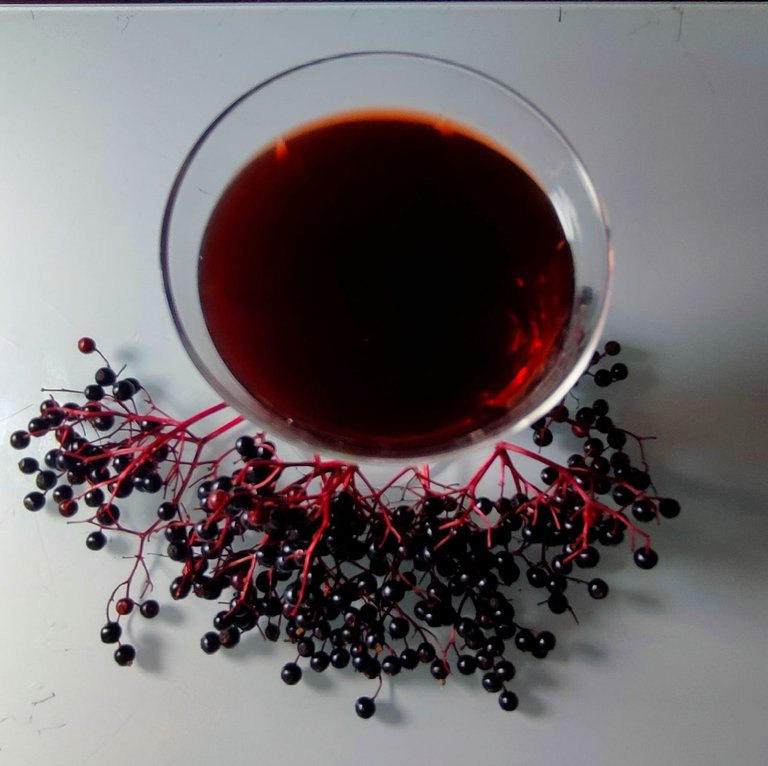
This is elderberry wine. It almost tastes like port. I can easily drink a glassful, but it also has strong alcohol in it.
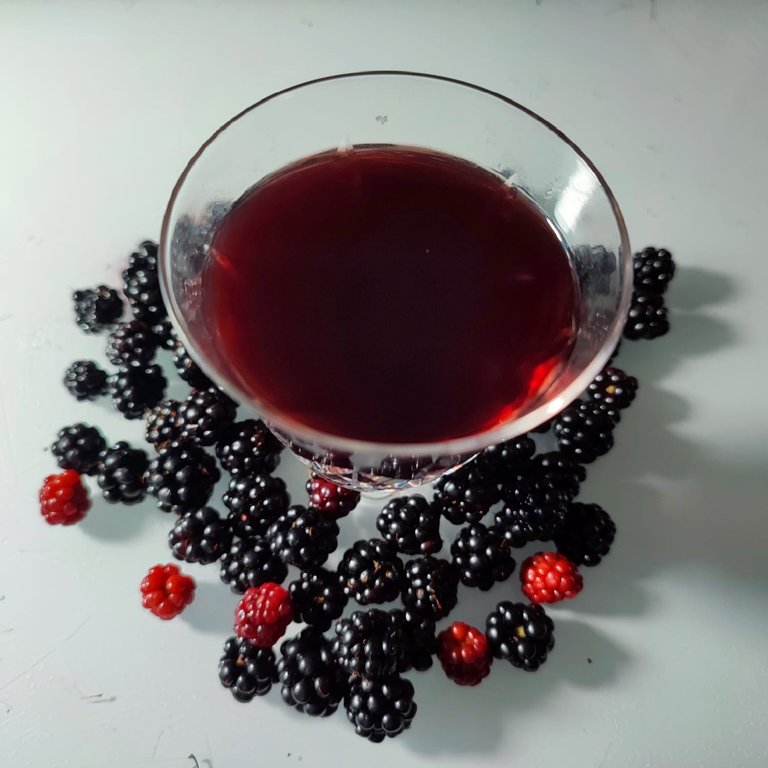
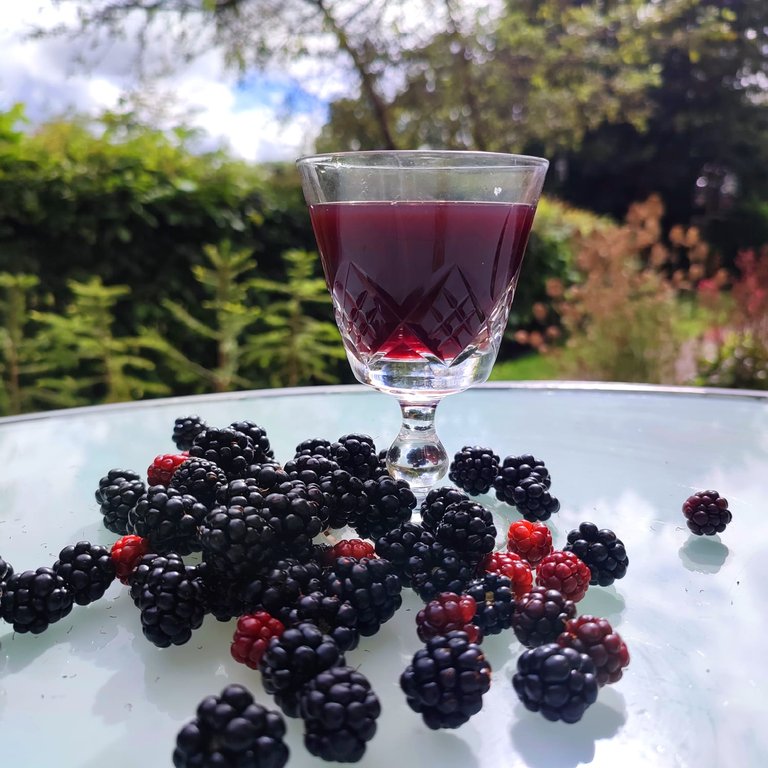
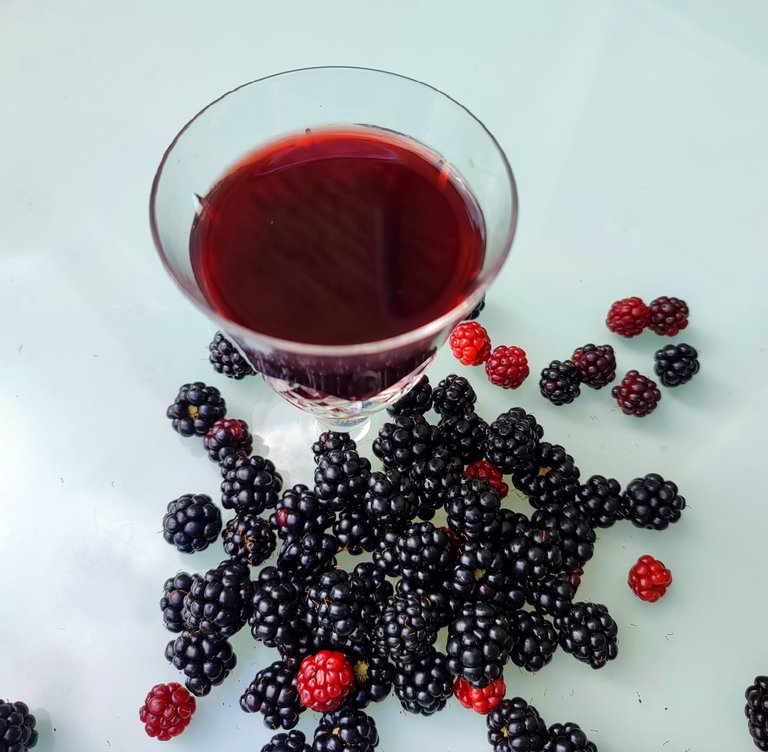
The blackberry wine. This has a strong alcohol content but a pleasantly lovely taste, very fruity and not so sweet.

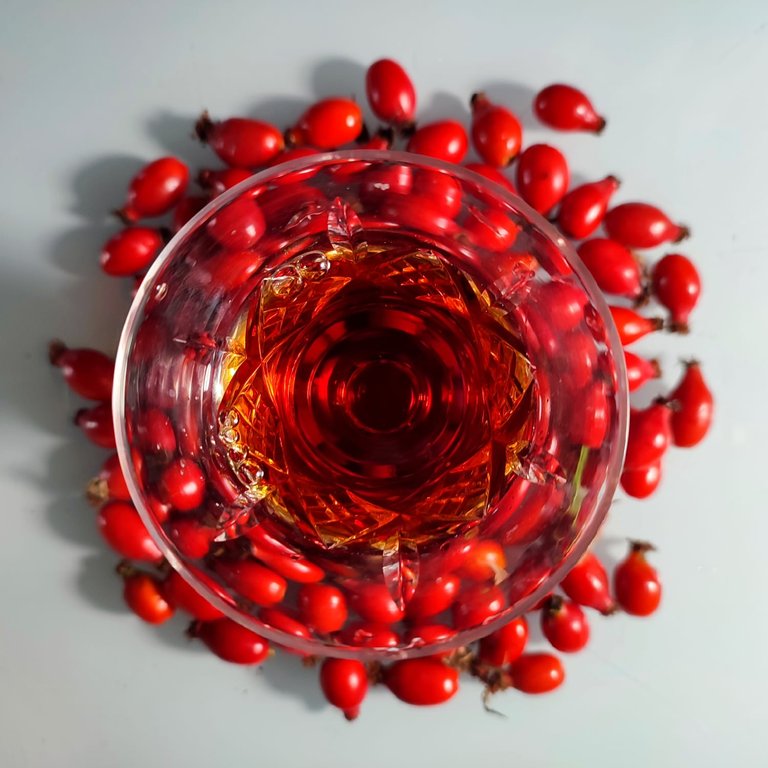
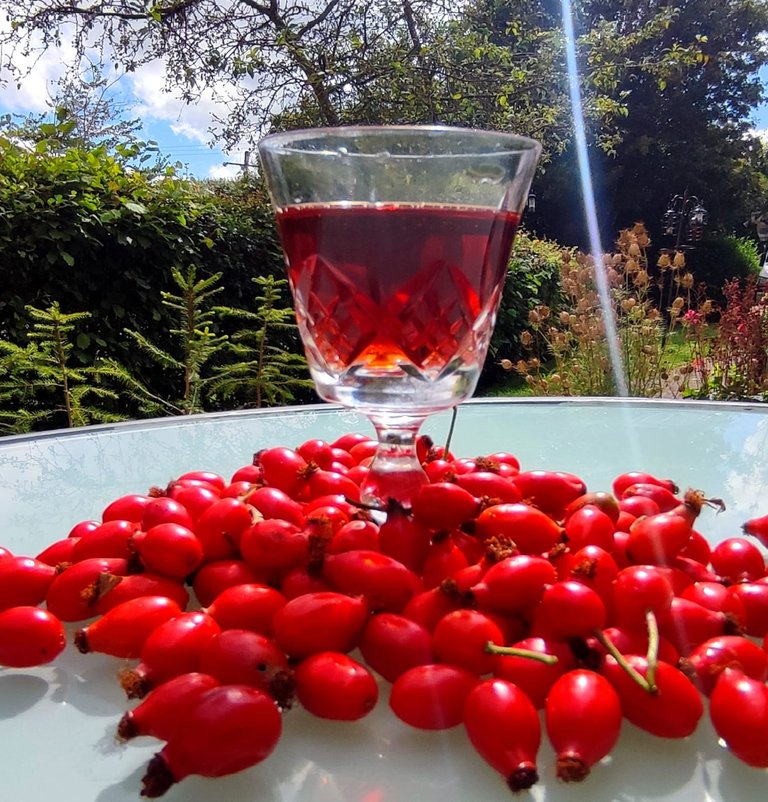
The rosehip wine has a smaller yield but is amazingly nice. It also has a beautiful, sparkly colour. It's citrusy and fruity with sweetness and lots of alcohol content.
They are all lovely wines with an amazing fruity taste, are full-bodied with beautiful colour, and are definitely alcoholic ;)
I look forward to making more once the berries are fully ripe in a couple of weeks, and I hope to share the process with you.
Have a wonderful day, everyone. 😊
Mariah 💚
The blackberries are ON so I went out to pick some. I went to a place where I used to hunt, as it had been over run with berry vines making it a tough hike then. The trees have grown a lot in the decades since, and most of the blackberries were gone. However, there were all three species available locally in little glades, the Trailing, Evergreen, and Himalya. So I picked a quart or so. I even found a bucket to put them in. There were copious native blueberries (I think they're a species of huckleberry, but opinions vary, and they're blue, so as a kid I always called them blueberries) and a lot of Salal - but I'd already picked enough Salal and blueberries earlier in the year, so I left them be. However I was surprised to find red huckleberries, which were my favorite as a child, although I could only find a cup of them still on the bush. The red huckleberries, Thimble berries, and Salmonberries usually are done in July, and all were present at this place, although only the red huckleberries had any fruit worth picking.
We don't have the mountain elderberries here, just the red, inedible kind. About the only native edible fruit I didn't find there were the Sitka Rose, with their thorns so numerous it's like a fur coat. Nearby is a place with a steep bank about 3 meters high in full sun that is a wall of blackberries, with some salal at the base where it gets less light. If I take a ladder with me, I can lay the ladder against the berry vines and pick almost clear to the top of the bank, and since no one else bothers with the ladder, I could literally pick 5 gallon buckets of fat, sweet blackberries for days at that place, about 30m long. However, I don't have the big carboy you use for fermenting and have never tried to make fruit wine, or any kind of juice, except to can as jelly. My freezer is about packed with berries now, and it's time to start canning!
I've never been anywhere the mountain elderberries lived, so have never tried them or anything made from them. I was very impressed with the clarity of the rose wine you made. Such a beautiful color! It reminded me of the red huckleberry jelly my mom used to make when I was a child, ruby red and clear as crystal, so sweet and tart. It was my favorite wild berry then, and remained my favorite until I discovered raspberries. I have a few in pots now, and my gold raspberries are flowering and fruiting again, which will help make up for the spindly crop I picked this spring. The red raspberries produce more, but I prefer the flavor of the gold, so I hope to be able to pick enough of them to can a few pints of jam from both types.
I only recently have learned to can jam and jelly, and just learned this month that some berries (salal) have enough pectin that you don't need to add any store bought to make jam gel up, and can even add them to blackberry jam 1:3 to replace store bought pectin, and cut down on the sugar by 1/4, and the jam will still gel. I'm going to try that this year, and see if I can mess up as bad as I did last year and end up with syrup instead of jelly.
I really enjoy your posts. As you can tell, they inspire me and remind me of the glorious bounty of delicious things that are all around us.
Thanks!
Your comment is beautiful, and I am touched. You painted such a vivid picture of foraging, and when you were a kid, your knowledge of berries through experience shows. I have yet to encounter salal berries and huckleberries, which seem not common here. It is good that Salal has plenty of pectin for the jam; you won't need to add pectin. Apples have plenty of pectin, too; it can be added to berries to thicken the jam. Some seeds also have lots of pectin, like chia and cal, which also thicken the jam. Be careful when reducing sugar; the jam might go off too soon. Add atleast 40% sugar but, ideally, 60% sugar to preserve the fruits long-term. I usually go 50:50 for sugar to fruit ( fruit including water if needed). I tend not to add water to berries; I weigh them and add the same weight of sugar; adding lemon gives them a better tart zing, or adding a little citric acid. Your enthusiasm for jam-making is inspiring. I will post about jam in a few days when they are ready. Thank you for this lovely comment. 😊💗
We used to do a lot of country wines. My favourite was elderberry and blackberry - although we drank a little too much one night, and never drank it again.
It’s no surprise that you might have had a little too much on one occasion—homemade wines can be surprisingly strong! Haha! I hope it did not put you off. Maybe one day you'll be making them again. 😊💗